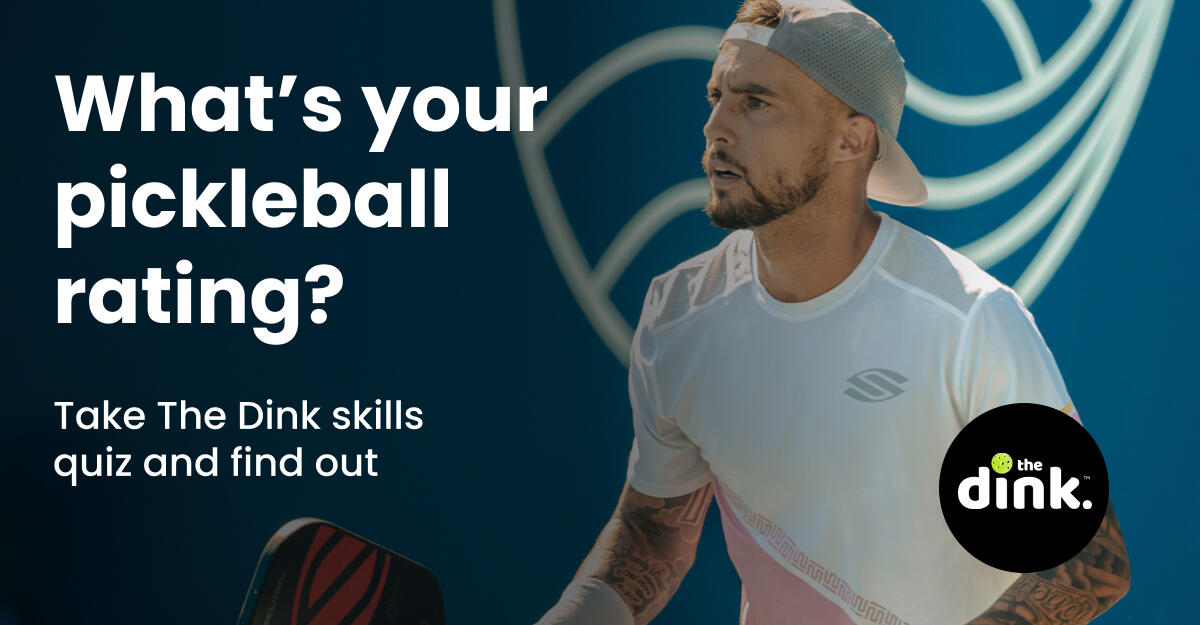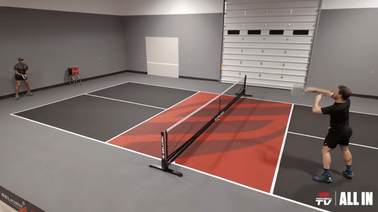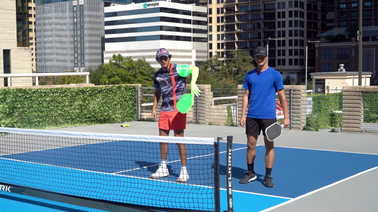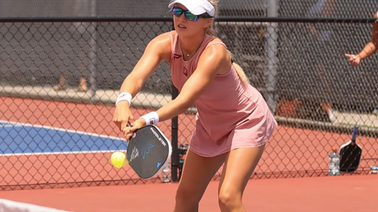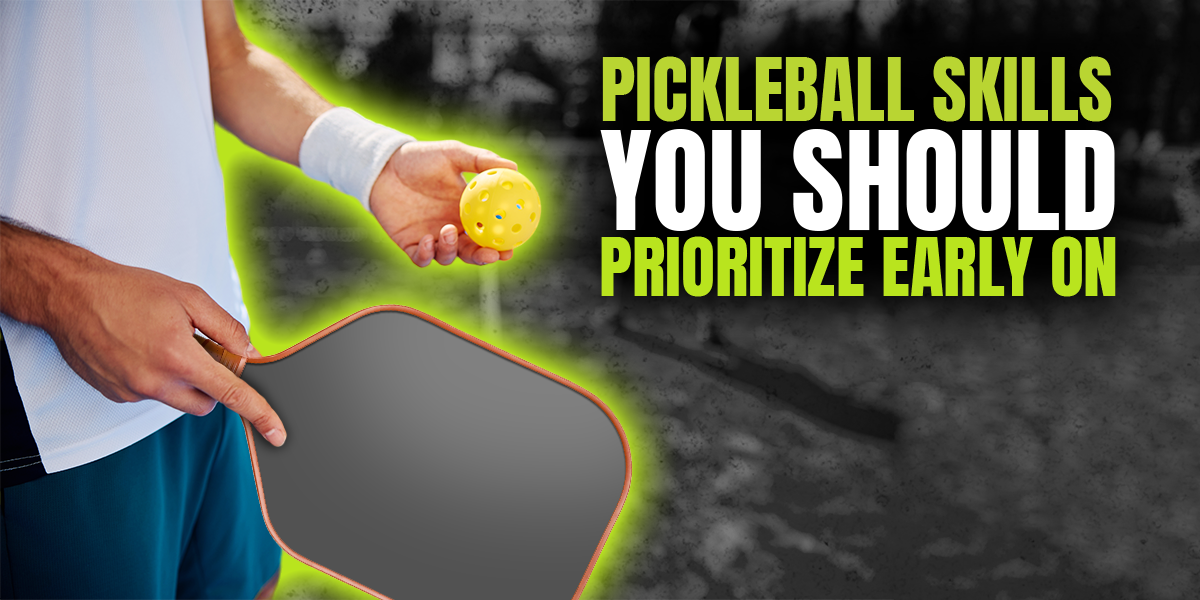
On the polyurethane surface, pickleball looks simple; you use a large paddle to hit a small ball over the net to your opponent.
As you look closer and play more, you discover that the game has much more nuance, and developing the skills you need for success takes time and practice.
But, what you might not know is where to spend that initial focus. What skills are most important to learn, and what will help you get better results quickly?
That's what we're here to answer.
The most important pickleball skills
While this list is subjective, and others may disagree, there are five key areas of pickleball that will not only help you start out well, but help you compete with more advanced players earlier in your pickleball journey.
These five areas include:
- The serve
- The return of serve
- Footwork
- Shortening your swing
- Third shots
Let's dive into each.
The serve
Only one shot is guaranteed to happen every single rally – the serve. It's the only shot that is 100 percent in our control. Yet, so often, this shot is overlooked or underutilized.
Perhaps this is because, unlike tennis, the pickleball serve is hit with an underhand motion, which makes it look weak.
This puts it on par (at least in players' minds) with a granny shot at the free-throw line and slow-pitch softball.
Most players begin just focusing on getting the ball over the net. This isn't a bad strategy at first, but if you want to compete, you'll need to do better than that.
A deep serve or one that's carefully placed left or right can force an opponent to hit a weaker return, giving you an advantage for the rest of the point.
How to develop a better serve
The first step to developing a great serve is understanding that depth is most important. You want the ball to land as close to your opponent's baseline as possible.
To do this, it takes some practice. Try this drill:
- Grab a cone, water bottle, or another paddle and place it about two feet within the opposite baseline
- Start with it in the middle (between the centerline and sideline)
- Hit 10 shots in a row from your own baseline and simply focus on hitting your target – don't worry about speed, technique, or anything else
- Move the target closer to the centerline, hit 10 more serves, then move it to the sideline and hit 10 serves again
- Switch to the other side (the left if you started on the right) and do it all again
You'll notice there isn't much discussion about technique here. That's on purpose. You can find plenty of great video lessons out there about technique, and you'll develop a better serve over time if you keep working at it.
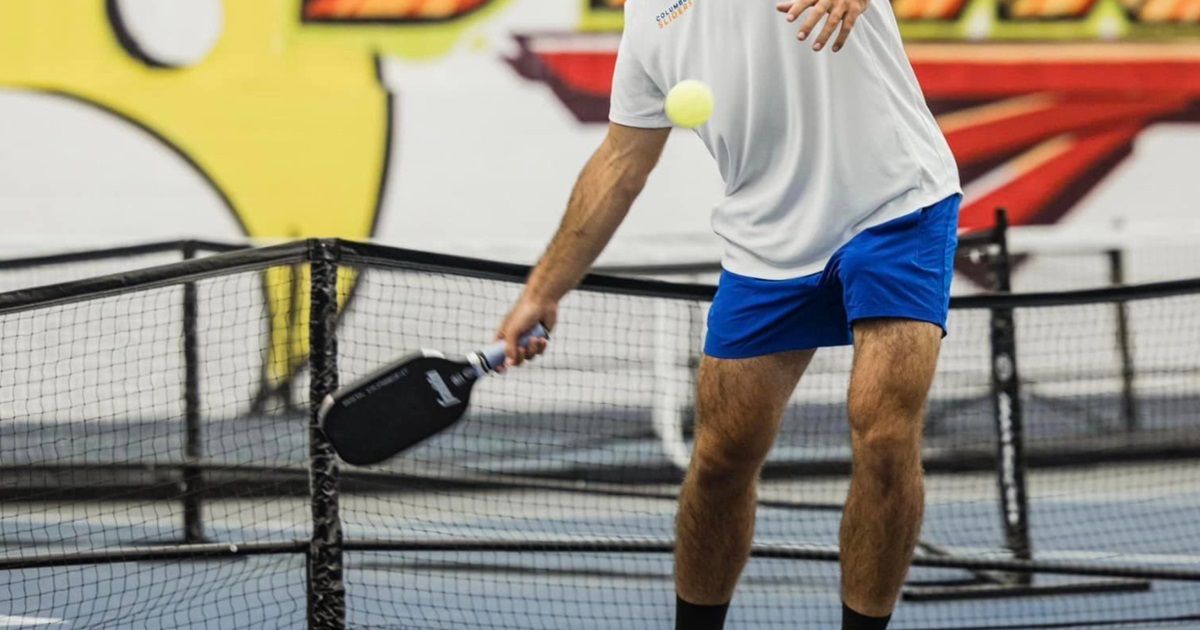
But right now, it's just about feeling like you can hit your spot regularly so you are comfortable during a game.
The return of serve
The second shot of every rally is the return of serve, another part of the game often overlooked, especially when starting out.
Again, the focus for most is simply getting the ball back over the net.
Interestingly, the focus on your return of serve is (almost) exactly what it should be for the serve: get it deep.
But there is another aspect worth considering regarding the return of serve – especially if you're just starting out.
That aspect is height.
It is absolutely fine to hit a high-arcing return of serve to your opponent. This is because the return of serve has a particular goal in pickleball. Your return of serve should help you get up to the non-volley zone (or kitchen) line immediately after it.
In pickleball, you learn pretty quickly that the kitchen line is prime real estate, and you should try to spend the majority of your play there.
A high, deep return of serve is all about buying you time to make it to the line.
How to develop a better return of serve
For practicing a return of serve, it's great to have someone on the other side serving the ball your way. If you don't have that, consider renting (most local clubs offer this) or purchasing a ball machine to have balls fed to you.
If you can't do either of these, then it is possible to practice it by yourself. Drop the ball in front of you and hit it off the bounce, focusing on the goals below.
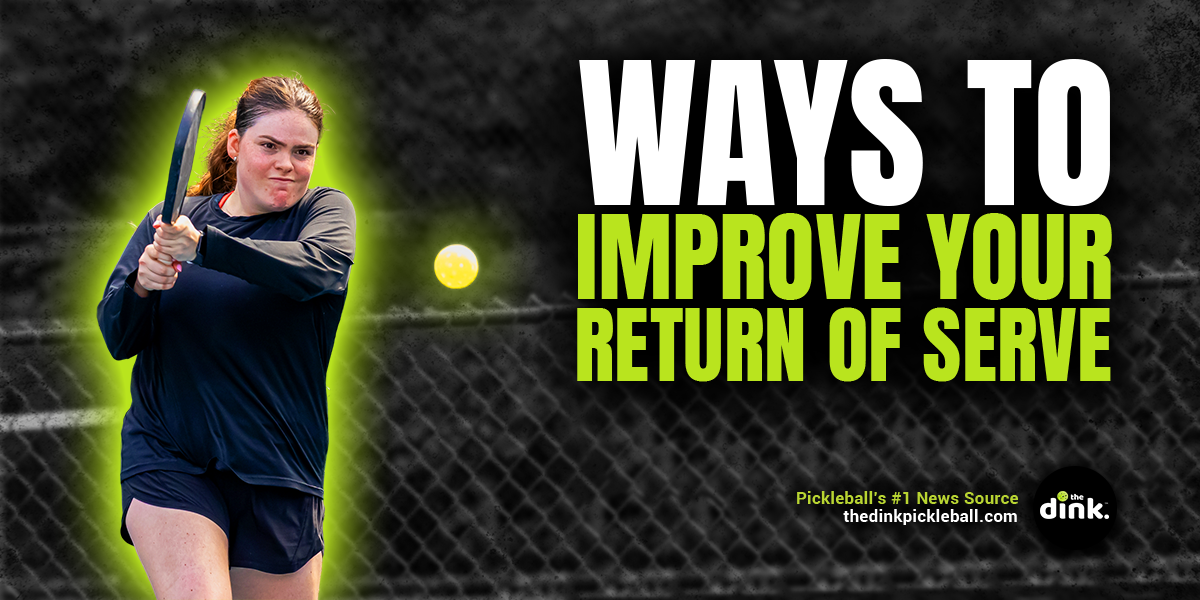
Your goals for return of serve practice should be:
- Hit the ball deep (place a target like you did for the serve)
- Hit the ball high (doesn't have to be incredibly high, but mess around with the height to see what makes sense for you)
- Running through the ball as you hit it
That last part is important because of the above-mentioned goal of getting to the NVZ line immediately after you serve the ball. Running through the ball can cause you to overhit it, so you'll need to practice this to make it a strong skill.
Footwork
Since the first two things mentioned were the first two shots taken every rally, you'd think this one would be about the third shot.
Nope.
The third most essential pickleball skill you should work on is footwork.
Why?
Because good footwork allows you to:
- Be in a better position to take every shot
- Be in a better position to defend every shot
- Eliminate mistakes (like pop-ups)
- Reduce the risk of injury
That last one may not seem like a skill, but increasing your chances of staying upright and on the court are necessary skills everyone should improve on.
How to develop better footwork
Where you should be at any point during a match is something you'll learn with more experience.
Instead, what you should focus on early when learning how to play pickleball is putting your body in a strong, actionable stance. A stance that allows you to move left, right, forward, and backward without crossing your feet or running into your partner.
The best part about this is you can practice it at home.
Here's what a strong athletic stance looks like for pickleball:
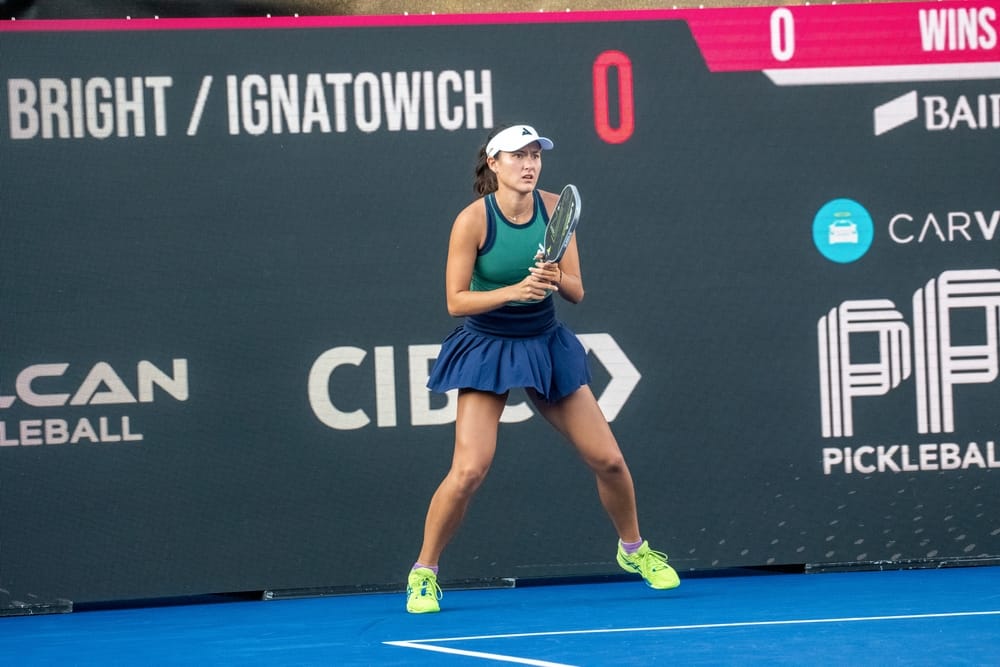
Anna Bright, in this photo above, shows us the keys to a strong stance:
- Knees slightly bent
- On the balls of her feet
- Chest forward/butt backward
- Paddle in front
This stance will allow you to move around the court without becoming unbalanced or tripping over your feet.
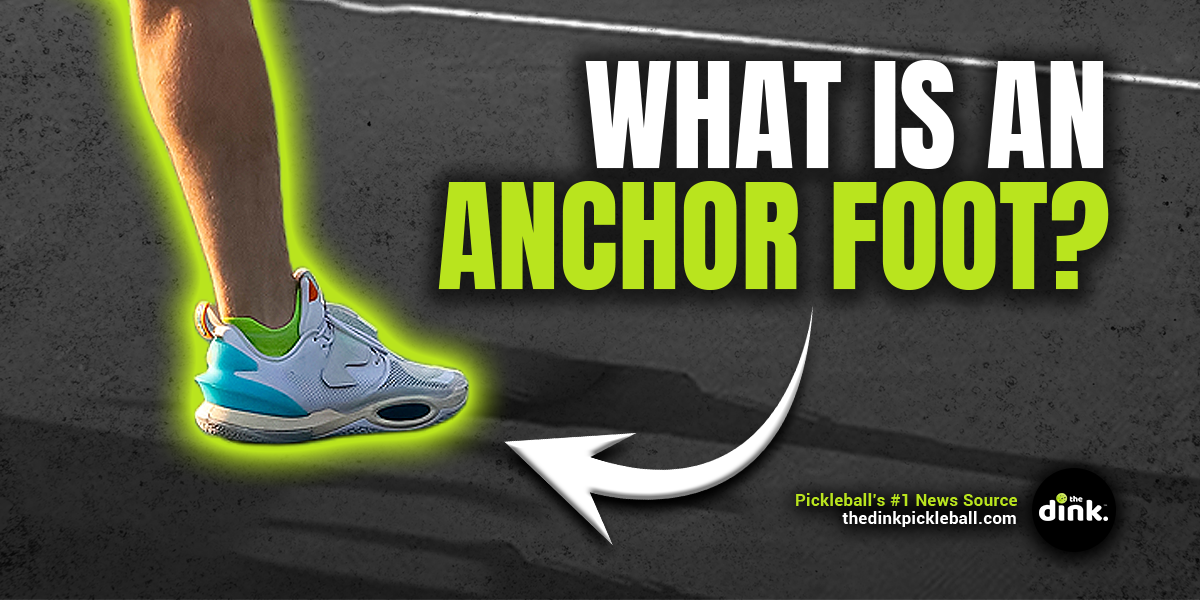
Of course, in pickleball, there is more nuance than this, but if you find yourself standing like this across the entire pickleball court, you will be in great shape for anything that comes your way.
Shortening your swing
Next up on the list of skills you should prioritize for pickleball is shortening your swing.
So many players try to treat pickleball like tennis early on, even if they have no tennis background. This makes sense. It's what most people are familiar with growing up.
So, they take massive swings at the ball.
However, a pickleball court is less than half the size of a tennis court, and a big swing will result in an out ball more often than you realize.
One of the best things you can do to get better at pickleball is to focus on making your swing as short as physically possible. Having a small swing will propel you further than developing a monster drive ever will.
How to develop a short swing
It doesn't take much to hit a plastic ball that weighs less than an ounce over the net. So, the best way to practice shortening your swing is to remove your backswing completely from your game.
It sounds crazy. But you truly don't need it.
Instead, you want to focus on keeping your paddle within your field of vision and never take it back past the line of your body.
As you continue to improve that may change, and you might be able to get away with adding a bit more backswing to your shots. However, you don't need to.
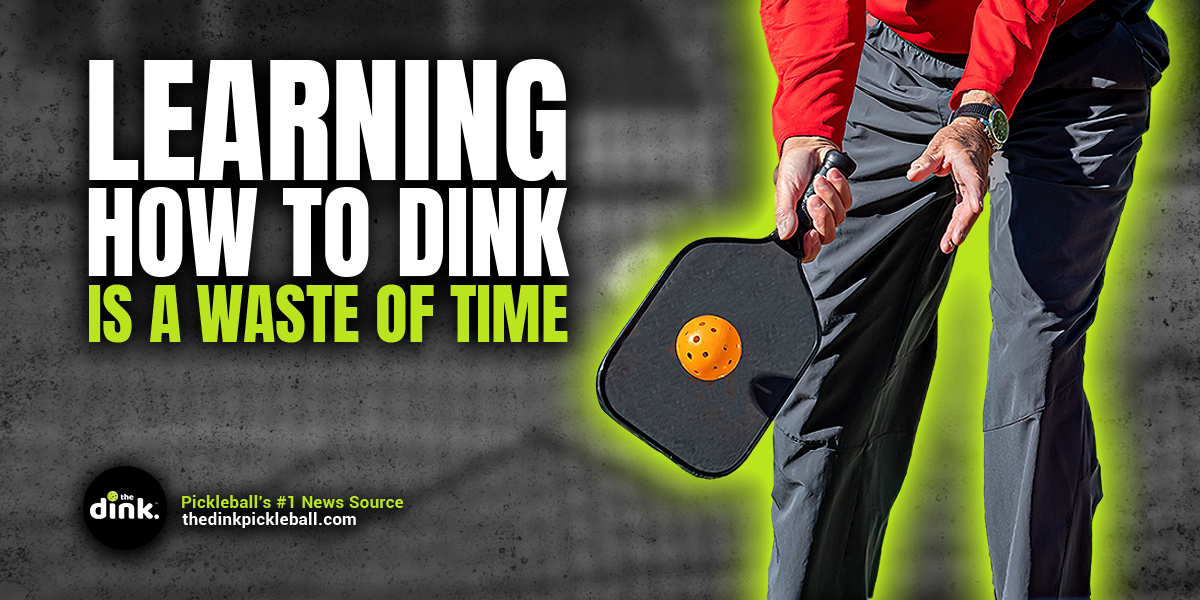
A good way to practice this is to stand in your athletic position, as mentioned above, and place the top of your paddle down (toward the ground) in front of you. Your knuckles should be facing the lower half of your body.
Now, drop a ball in front of your paddle and push it your paddle into it.
Don't swing. Push.
Notice how much power you can put into it and how far you can send a pickleball with zero backswing. Whether you're hitting a forehand, backhand or dink, focus on eliminating as much of your swing as you can.
It'll help you become consistent and keep more balls on the court.
Third shots
Your third shot is the final skill you should prioritize when learning to play pickleball.
The third shot is the shot after the return of serve. It's considered the most important shot in every rally because the result plays a massive role in who gains the upper hand in the point.
You have three options when making a third shot:
- Drop
- Drive
- Lob
For now, you're only going to focus on driving and dropping. Lobbing third shots is typically just a poor play, and unless you have an extremely good reason for it, you shouldn't do it.
We're not saying you can't do it, but it's a low-percentage shot and rarely puts you in a great offensive position.
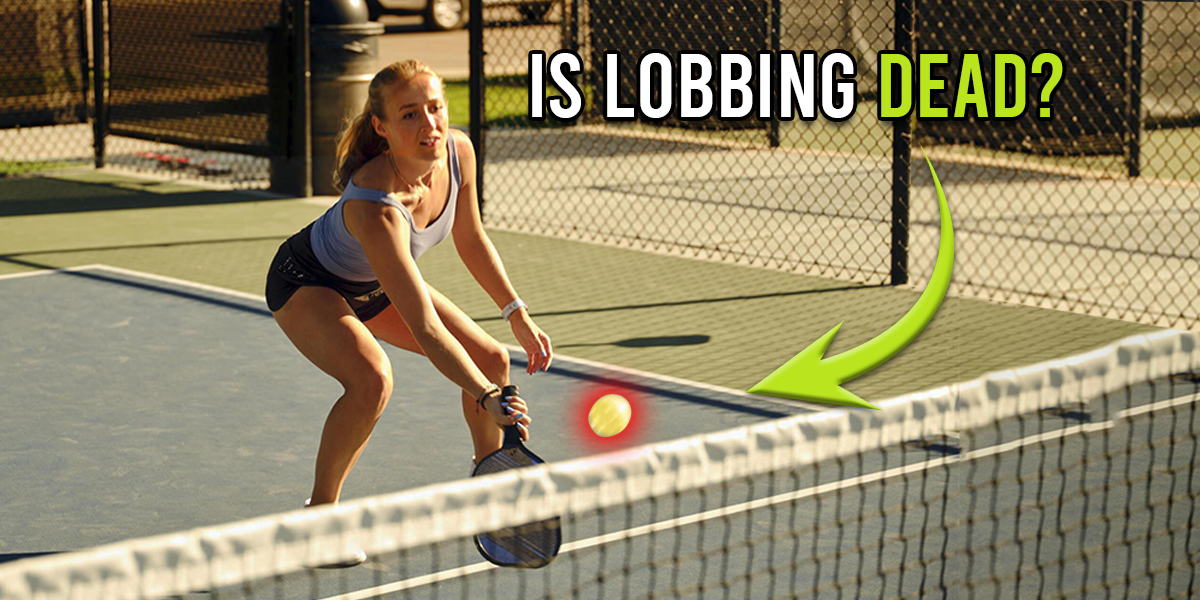
A drop shot is a high arcing ball that lands softly in your opponent's kitchen – or at least, that's the goal of a drop shot.
A drive is a hard-hit ball that you aim a few inches above the net, and it's designed to put pressure on your opponents.
Choosing between a third-shot drive or a third-shot drop is one of the first strategies you develop in pickleball.
Most players start out driving. It's easier and more familiar, and many beginning players struggle against hard-hit balls – which means you get immediate success if you develop a good one.
Drops, on the other hand, are more difficult because they are all about touch. You want to drop a ball high enough to clear the net but low enough that it falls in front of your opponent waiting at the kitchen line.
Drop shots are used to give you and your partner time to improve your position for the next shot.
Drives are used to a) put pressure on your opponents and b) to set up an easier next shot, because defending a drive often means the next shot from your opponent is going to be weaker.
If you're new to pickleball, this may all sound confusing. However, as you gain experience, it will make more sense.
How to develop a better third-shot drive
You should develop your drive first as a new or fairly new player. It's going to be easier, and when you hit a poor drive, your opponent typically punishes it less than a bad drop.
To hit a better third-shot drive, you want to focus on aiming at least six inches above the net. You want your swing to be as short as humanly possible. And you want to pretend that there is no one in front of you waiting for the ball.
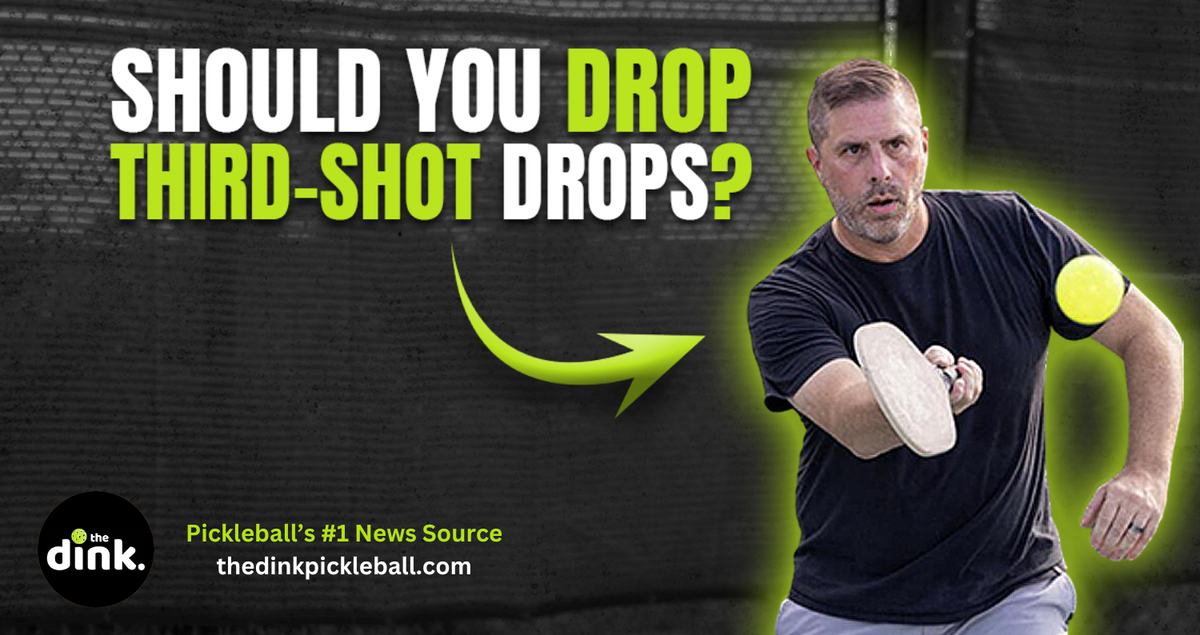
Something about that person being there makes people think they have to blast the snot out of the ball for it to be effective.
You don't.
You can hit your drives at about 70-75 percent and have them be just as effective as if you hit one at 100 percent of your power.
The difference is that you're 10 times less likely to hit the ball out of bounds at the lower percent.
You can practice these shots against a wall if you don't have anyone to practice with. Draw an X on a wall (or use tape) about 40 inches from the ground (the middle of the pickleball net sits at 34 inches, so at 40, you're giving yourself about six inches of space) and aim for the middle of the X.
As you improve your accuracy, test adding more power to your drive to see if you can still hit the X nine out of 10 times.
How to develop a better third-shot drop
Once you feel good about your drive, it's time to develop a third-shot drop.
Many people think a good third-shot drop should barely go over the net, but that's not the case.
A good drop shot should land in the last third of your opponent's kitchen. This area makes it less attackable and forces your opponent into a tougher shot.
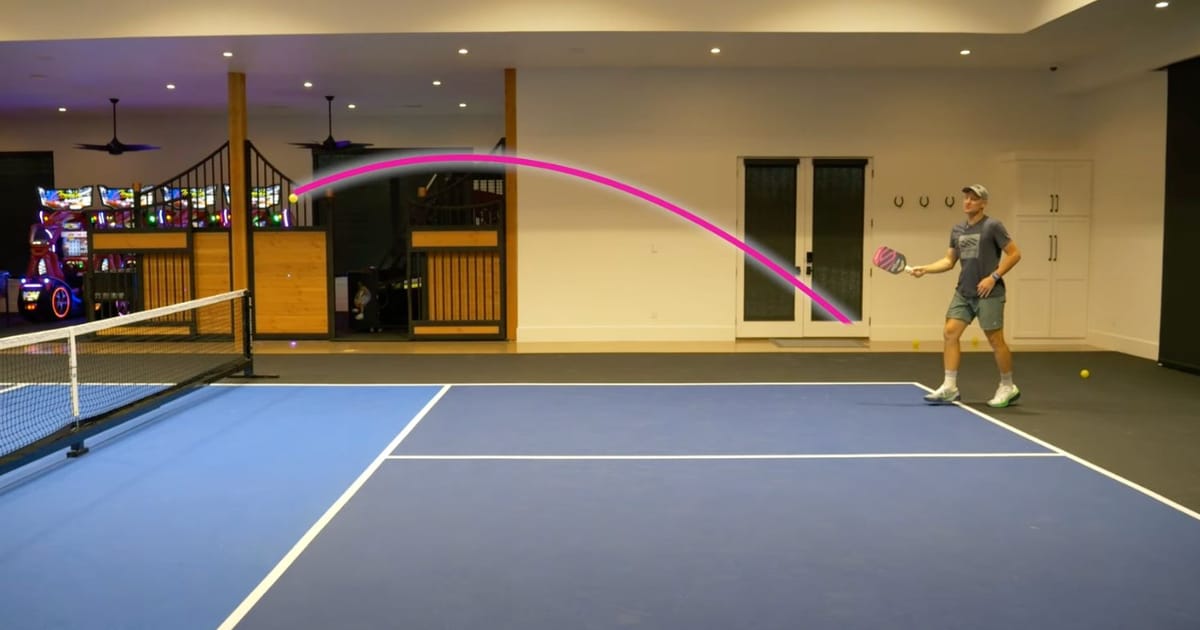
Developing a consistent drop shot requires getting your paddle face under the ball (your knuckles should almost face the ground) to lift it high into the air.
Think of throwing a ball underhand. Your palm is face up, your knees are bent, and you are lifting with your lower half as much as your arms and shoulders.
You want your wrist and arm to be as still as possible as you move your body through the ball like you're taking a step.
This is going to take practice.
However, you can practice this anywhere. Place a bucket or a laundry basket about 10 feet away from you and drop a ball in front of your body. Then, using the technique described above, try to get the ball to land in the basket.
Once you do that consistently, move the basket or bucket five more feet away.
On the pickleball court, you will hit your drop shots approximately 20-25 feet. You can keep moving your basket until you reach about that distance.
If you can safely land your drop shots in a basket from 20-25 feet away, you will become a force on the pickleball court.
There you have it: the shots you should prioritize first in pickleball.
Yes, it's a lot. But, if you do it right, you'll be playing this game for the rest of your life. You might as well get good at it now before the entire world realizes they've been missing out.
